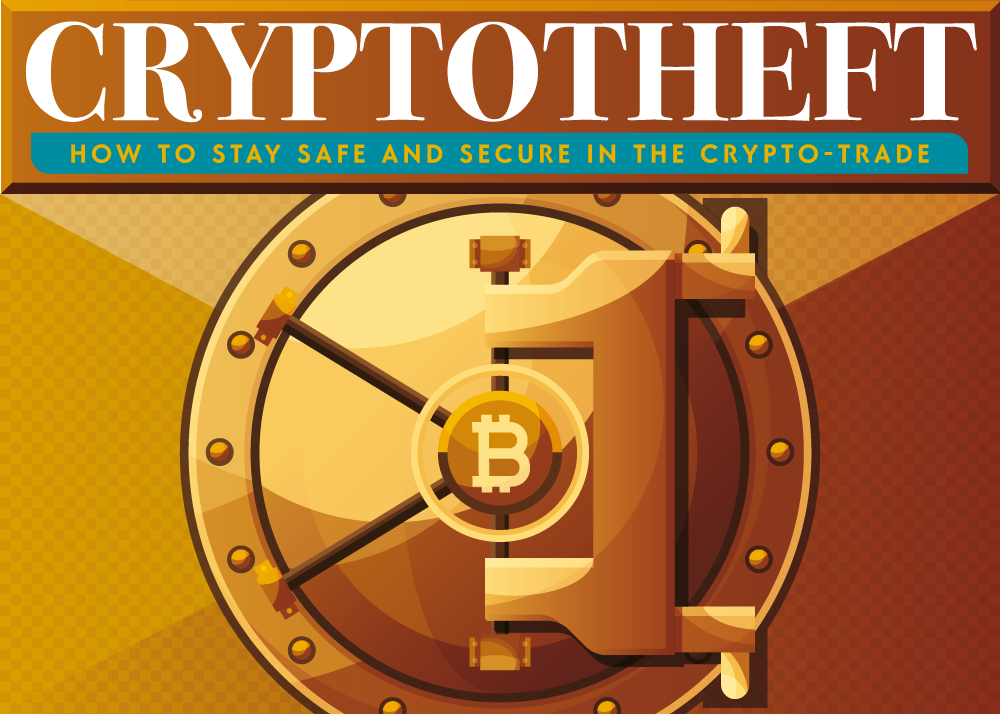Latest news about Bitcoin and all cryptocurrencies. Your daily crypto news habit.

Every week, crypto makes headlines. A booming industry with plenty of money to be made, navigating the choppy waters of crypto can be daunting at first. With countless cyber criminals at the heels of exchange platforms and blockchain wallets, thievery is a very real and active threat and could cost you thousands.
Classic scams like phishing hacks or Ponzi schemes remain some of the most tried and true methods for cyber criminals. With so much potential to be made from stolen crypto, these criminals are stepping up their efforts in thievery — and it’s paying off. In 2017, $115 million worth of stolen crypto was attributed to phishing scams and $103 million attributed to exploitation of software and storage.
Encryption, anti-virus software, and multi-factor identification will only keep your assets safe to a point; they key is preventive measures and simple common sense. Simple tricks like turning off SMS and email authentication for account recovery, using a safe to store USB and sensitive data, and just being mindful of the pages you enter your information in can mean a world of difference when it comes to your crypto assets.
Every year, Bitcoin theft grows exponentially; from $3 million in 2013 to $95 million in 2016. As value and popularity of cryptocurrency grows, these numbers will too. Take a look at this infographic for more on how to protect your crypto assets, trade safely, and invest wisely in this unpredictable market.
How To Protect Your Crypto From Hacks, Theft, and the Unexpected was originally published in Hacker Noon on Medium, where people are continuing the conversation by highlighting and responding to this story.
Disclaimer
The views and opinions expressed in this article are solely those of the authors and do not reflect the views of Bitcoin Insider. Every investment and trading move involves risk - this is especially true for cryptocurrencies given their volatility. We strongly advise our readers to conduct their own research when making a decision.

